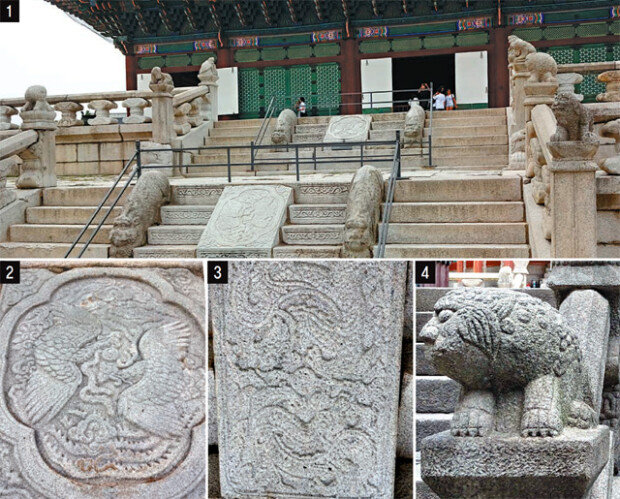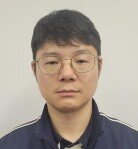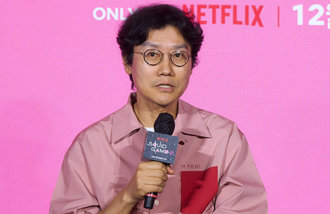‘Da Vinci Code’ of King Gojong hidden in the animal statues
‘Da Vinci Code’ of King Gojong hidden in the animal statues
Posted May. 30, 2018 07:56,
Updated May. 30, 2018 07:56

Gyeongbok Palace is one of Korea’s proud cultural assets, which is visited by six million people every year. As many as 68 animal statues are grandly surrounding the Geunjeong Hall, the main throne hall of the palace. It is quite different from typical imperial structures of the Joseon period, where the Confucianism philosophies of frugality and moderation were prevalent. The animal statues were added to Gyeongbok Palace, which was originally built in 1395, during the reconstruction of the palace in 1867, when Emperor Gojong ascended the throne.
“The animal statues placed in palaces in late Joseon period represent Emperor Gojong’s aspirations to regain national power,” wrote Professor Kim Sung-hye of Catholic Kwandong University in her paper titled “Research on the symbolism of animals engraved on Dapdo in modern Korean architectures” published in the academic journal “Research on Korean Studies” by Korea University’s Center for Korean Studies.
Engraved on the Dapdo, which is the center stone of the stairs leading to the main hall of palaces, in front of the Geunjeong Hall is a phoenix. Phoenix is thought to be the best of all birds, which has noble and sacred energy. The phoenix was not there when the palace was first built in 1395. Emperor Gojong had his heart in the phoenix statue during the reconstruction of the palace in 1867, strongly hoping to recover royal authority and national power weakened by power politics.
“The animal statues are not just for aesthetic quality of the palace. They have high level of political intention,” said Professor Kim. “The statues are like the ‘Da Vinci Code’ of Emperor Gojong, who dreamed of building an independent nation through modernization.”
The most unique animal design among royal architectures of modern Korea can be found in Jibokjae at Gyeongbok Palace. Jibokjae was originally built inside Changdeok Palace in 1881 but was moved to where it is now in 1891. Jibokjae was a personal study of Emperor Gojong and also was an office, where he received ministers from other countries. Dapdo was usually constructed only in front of throne halls or Buddhist temples but the only exception was Jibokjae.
On October 12, 1897, Emperor Gojong built Wongudan and acceded to the throne there. Wongudan is a place, where emperors performed ancestral rites. Therefore, Gojong needed some symbolic objects that befitted the place. He placed a pair of dragons and Haechi on the Dapdo of Three Doors between Wongudan and Hwanggungu. A pair of dragons represents the authority of an emperor and Haechi, an imaginary animal that defeats injustice with its horns, is an embodiment of law and justice. These two animals reflected Emperor Gojong’s vision of absolute monarchy and modern constitutionalism.
Won-Mo Yu onemore@donga.com







